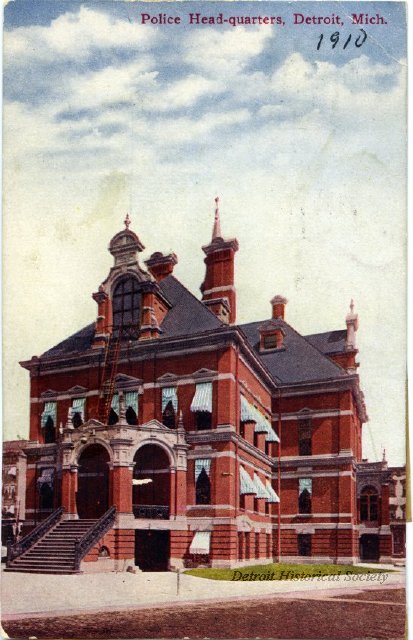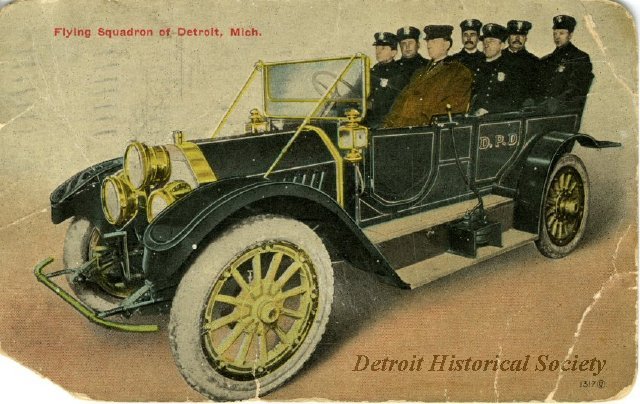From Detroit’s founding in 1701 to 1860, the city did not have an organized police department. In the early 19th century, Detroit was considered a garrison city and the city marshal enforced the laws and army commanders formed local militias to protect the public. Preceding the formation of a police department, various patrols and nightwatches policed the city.
Despite some opposition, on March 12, 1861 a charter amendment created a Police Commission consisting of the mayor and two city council appointees but it was ineffective. Following a riot in 1863, precipitated by a black citizen being accused of rape (later proven false), pressure grew for a functional police force. On February 28, 1865 a four-member Metropolitan Police Commission was established by the state legislature, creating the Detroit Police Department. However, the first uniformed officers did not take to the streets until May 15, 1865. The delay in getting the original 40 uniformed officers on duty was attributed to the high deployment of soldiers fighting in the Civil War.
During the first active year of the police force, Detroit officers made 3,056 arrests and corralled 200 loose animals and 1,700 stray geese. The officers of this era were not issued weapons, but most carried personal handguns.
The Detroit Police Department embraced innovation and change in the late 19th and early 20th centuries. In 1893, L.T. Toliver became the city’s first African American police officer. Detroit’s police department was the first in the country to use automobiles for patrol, in 1909. In 1922, the department became the first in the nation to use radio dispatch technology.
During the 1920s, the Police Department expanded to tackle escalating crime but it also became more controversial; some citizens claimed there was a deliberate policy of recruiting white southerners who would keep black residents in check.
Beginning in the 1950s, the population of Detroit began to change. Many white citizens relocated to the suburbs and remaining African American citizens often clashed with the predominantly white police force. The strain grew to a climax in July 1967, when the city erupted in violence after police raided an afterhour’s club in a largely black neighborhood, arresting 82 people.
After the uprising, city officials created a special police task force called STRESS. (Stop the Robberies, Enjoy Safe Streets). Civil rights leaders charged that STRESS escalated the tensions between the police department and the city’s residents and was unjustly targeting African Americans. In 1974, Coleman Young, Detroit’s first African American mayor, disbanded STRESS and in 1976 hired William Hart, Detroit’s first African American police chief. By 1998, nearly 61% of the police force in Detroit was African American.
At the end of the 20th century, Detroit had a reputation of being one of the most dangerous cities in the country and in 2000, the Detroit Free Press recorded that Detroit led the nation in fatal shootings by police. After William Hart’s 15-year tenure, six police chiefs served, among them the first female chief, Ella Bully-Cummings, until Chief James Craig took over in 2013. The Detroit Police Department continues to work at establishing effective community relations and to hold the department to high standards of professionalism and integrity.

